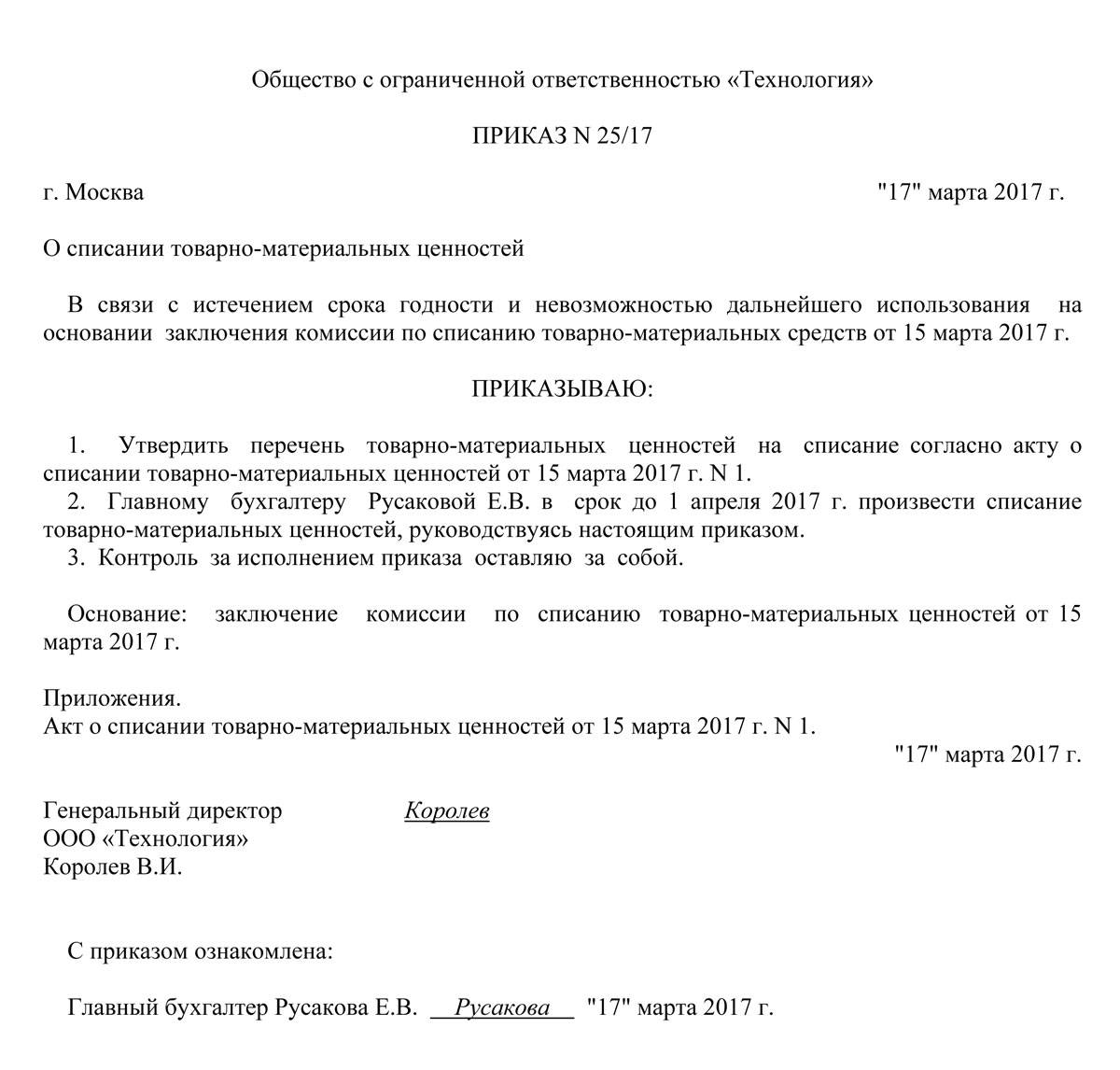Act on the write-off of material assets
If the goods have become unusable over time or due to any damage, and the company no longer intends to use these values, it must write off the materials. The procedure is carried out by a specially appointed commission, which necessarily draws up an appropriate act. A sample document relevant in 2019, as well as instructions for compiling, can be found below.
Sample and sample compilation
Various valuables are subject to write-off - these can be spoiled, damaged, unusable goods, equipment, raw materials, materials, etc. The company itself has the right to determine the list of these items and the basis for write-off.
The legislation does not impose strict requirements on the content of the act, so each company has the right to independently develop a sample that is convenient for itself. Typically, the act reflects the following information:
- In the upper right corner, the visa of the director “Approved” is placed, as well as the name of the company and the date of issue of this visa.
- This is followed by the name of the document and the date is put again (this is the day the document was compiled).
- Then they prescribe the composition of the commission of workers who analyzed the situation, examined the relevant goods and other valuables and decided to write them off. Usually this commission includes an employee working in a warehouse (storekeeper, warehouse manager), chief accountant. The director personally can also participate in the write-off, especially if we are talking about fairly large amounts.
- Then they write down the decision to write off and justify it - usually due to unsuitability, the impossibility of further operation for its intended purpose.
- The main part of the document is a detailed list of all written-off goods.
- Further, each member of the commission must put his signature and decipher it (surname, initials), indicate the position; also puts the original seal of the company in the act.
As a rule, the list is formed in the form of a table containing the following columns:
- number from the list (in order);
- name of the material (indicated in accordance with the accepted nomenclature or other documents);
- the total amount to be written off;
- amount for each line;
- notes - if necessary.
At the end of the table, the total write-off amount must be indicated (both in numbers and in words).

It is important to understand that the act is a complete legal document related to financial reporting. In the future, it will be used by accountants to enter data into other financial papers. Also, the original act may be required by the inspection authorities in order to determine the exact amount and list of decommissioned objects. In this regard, it is advisable to draw up a document in several original copies.
The procedure for writing off materials
The procedure for removing goods and other material assets is organized in advance. The initiative for the need to remove materials can be put forward by both the warehouse employee and the director himself or another employee of the company. The write-off procedure itself in the general case looks like this:





